|
Monday, October 10, 2011
Progress Notes
Recently, Gary Flaugher, former Ulman native and Tuscumbia High School graduate, called me to inform me that he had decided to donate to our museum his huge collection of Jewel Tea chinaware (photo 01).
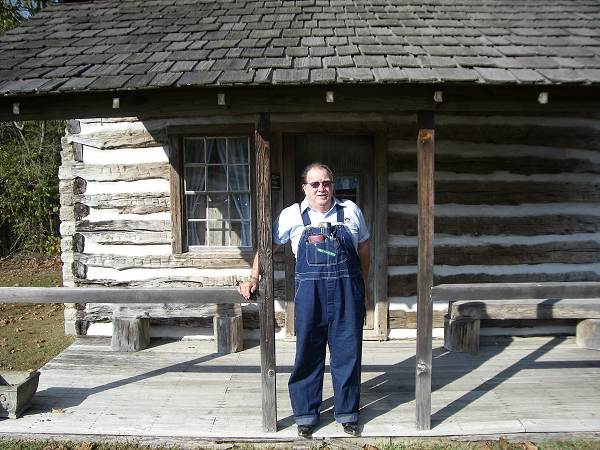
01 Gary Flaugher
For many years he and his wife Freda have been purchasing pieces of Jewel Tea china, usually at auctions and sales, and now they may have one of the largest collections of this very well known and prized chinaware. Here are photos taken of some of the Jewel Tea china where presently they are located in Gary and Freda’s china cabinet (photos 02 - 11):
Click on any of the photo thumbnails to view a larger image.
Note: Once you click on an image below, a new window will open. It would be best to maximize this new window by clicking on the middle box in the upper right-hand corner of the window. When you move your cursor over the image in this new window, it will change to a magnifying glass. Once this occurs, click on the image and it will show in a larger format for easier viewing.
I had known about the Jewel Tea Company because the original headquarters were located in the town of Barrington, Illinois, where my daughter, Jennifer Pryor McHugh and her family reside (photo 12).
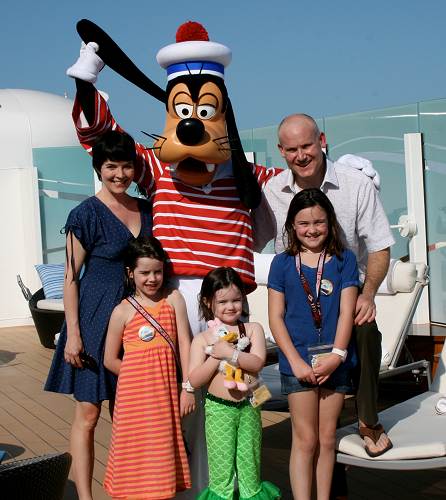
12 Jennifer, Liza, Pryor, Lily and Dan McHugh
Dan McHugh, Jennifer’s husband, is a native of Chicago. Jennifer is a very busy wife and mother. I have previously presented the story of Dan’s uncle, George McHugh, who heroically gave his life during WWII as the pilot of a B17 shot down in France staying with the plane and maneuvering it until it crashed to avoid a school yard of students. You can read that story at this previous Progress Notes.
A couple of years ago the Barrington Historical Society presented a display highlighting the Jewel Tea Company and it was there I first learned about it (photos 13, 14 and 15).
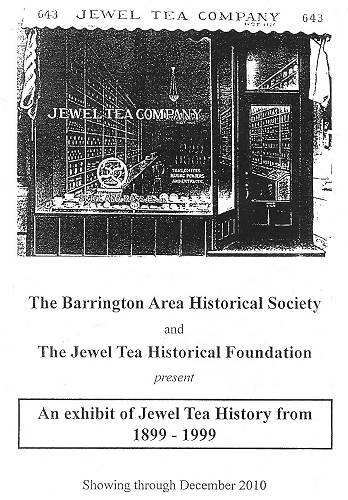
13 Jewel Tea Exhibit

14 Barrington Historical Society
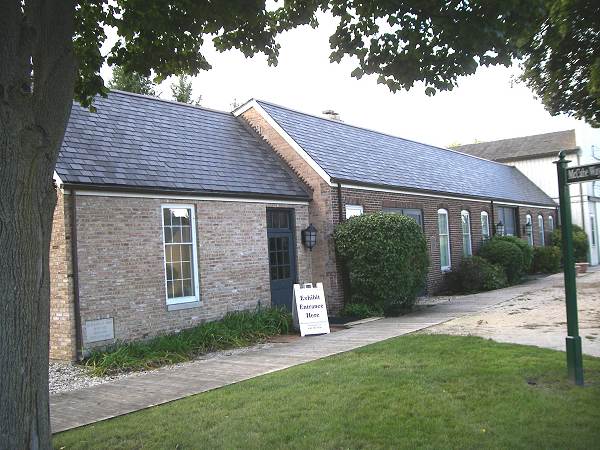
15 Barrington Historical Society
Copied here is a short summary of the Jewel Tea history that was presented at the Barrington Historical Society’s display:
“In 1899, two brothers-in-law Frank V. Skiff and Frank Ross started the Jewel Tea Company, selling tea and coffee from the back of horse-drawn wagons.
In the mid-1920’s, Jewel Tea entered into an exclusive agreement with Hall China Co. of Liverpool, OH. The Hall China Co. produced the famous “Autumn Leaf” pattern for Jewel Tea. The only way to purchase the china was through one of Jewel Tea’s door-to-door salesmen. It is by this method that many families acquired this delightful pattern. As the growth of the company continued, large operating facilities were needed and on June 27, 1929, ground was broken for the new headquarters and a Midwest plant on a site located on the edge of Barrington, Illinois. In April 1930, they publicly announced they were ready to move all operations from the Chicago location into the new architectural masterpiece constructed on 211 acres with an additional 100 acres they named "Jewel Park" (photo 17).
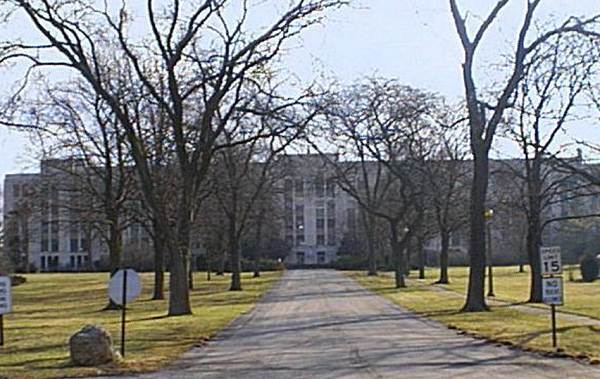
17 Former site of the Headquarters of the Jewel Tea Company - 1921-1981
The company continued its home deliveries for awhile by truck.
In 1932, the business expanded with the purchase of 70 former Loblaw stores in the Chicago area. Jewel grew steadily, and today operates 188 food and drug combination stores and 95 free-standing drug and food stores in Illinois, Iowa, Indiana and Wisconsin.
Jewel is leading the way in the grocery industry with a number of cutting-edge initiatives, such as introducing freshly prepared meals for customers too busy to cook meals at home, partnering with vendors and suppliers to ensure fresh foods are available to customers faster, and furthering its deep commitment to local communities where shoppers live and work.
The Jewel Tea Company was sold to American Can in 1981; the Barrington Headquarters was acquired by the Park Corporation which continued to operate the site until the mid 1990’s. The property was sold for development in the late 1990’s. Attempts to develop the property failed and the Barrington Park District passed a referendum and purchased the 55 acre site in 2002 and created the open space park known as Citizens Park. The park opened to the public in 2007.”
The original Jewel Tea Company has been merged several times with larger conglomerates through the years. In fact, the history of Jewel Tea and its contribution to one of the largest conglomerates of American businesses is fascinating and very well presented at this Wikipedia website and also at this Chicagology website.
Gary told me that his collection of Jewel Tea china is so large he will deliver it over time with each trip he makes home to Miller County from Lee’s Summit. We look forward to begin receiving some of Gary’s very historical Jewel Tea chinaware so that we can begin setting up our display of it.
Gary through the years has been one of our Miller County Historical Society’s most generous supporters. The Lupardus log cabin which we prominently have on display at the museum campus was donated to the Historical Society by Gary (photo 19).
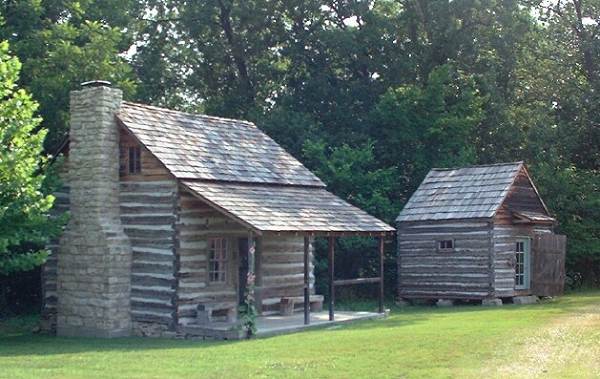
19 Lupardus and Williams Cabins
It was the home in which Gary was raised by his grandparents, Willard and Maggie Boyd (photo 20).
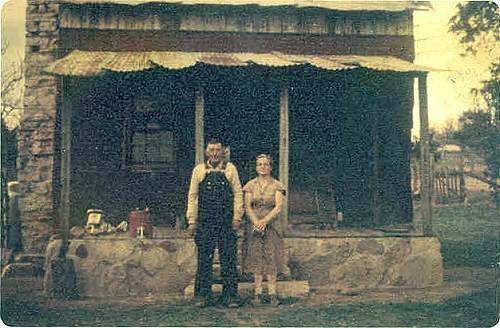
20 Willard and Maggie Boyd in front of Lupardus Cabin
The careful take down of the cabin at the Boyd farm now owned by Gary and the transfer of it to the museum campus was directed by board vice president, Carl McDonald, a direct descendent of Peter Lupardus, the original owner of the cabin (photos 21 and 22).

21 Carl McDonald
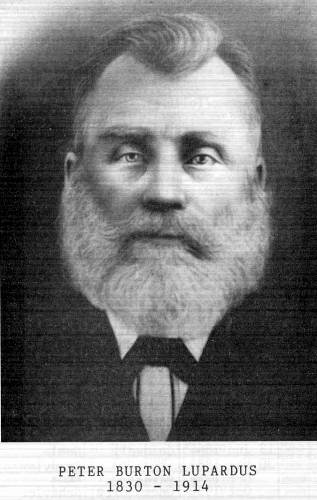
22 Peter Burton Lupardus
Ruby Fogleman Webb of Kansas City visited our museum about a month ago; however, this was not her first visit. She has been a Miller County Historical Society member for many years and has been very supportive of our efforts here. Ruby is in her early nineties now. Her father, Will Fogleman, was a highway contractor which necessitated that the family had to move often; however, she attended school at Tuscumbia in the mid 1930’s. Here is a group photo of the Tuscumbia High School Economics class taken in 1932 in which Ruby is on the far left (photo 23):
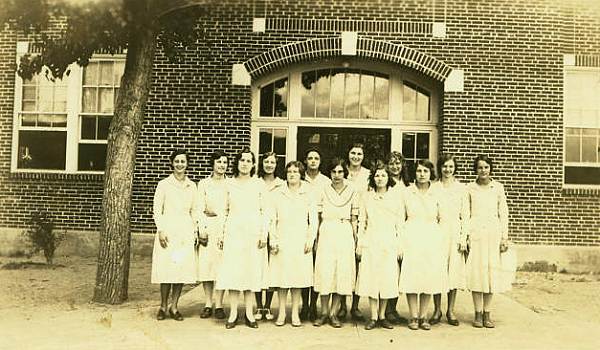
23 Home Economics Class Tuscumbia - 1932
I had featured several stories on this website before about the Fogleman family, all of whom were descendents of John Fogleman who came here in the late 1800’s to operate a livery stable (photo 24).
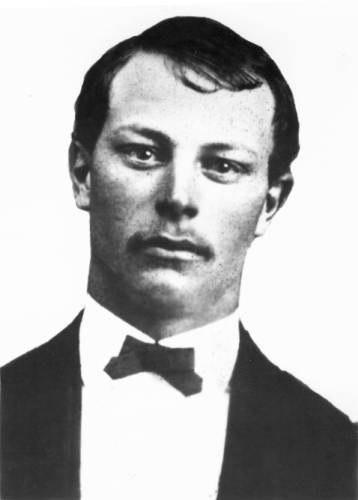
24 John Fogleman
You can read the biography of John Fogleman at this page on our website.
I also wrote recently about Ruby’s father, Will Fogleman, son of John, who suffered a tragic death (photo 25).
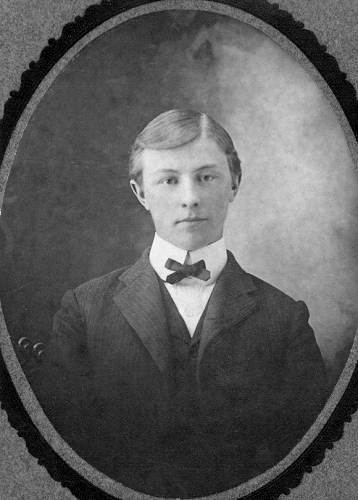
25 Will Fogleman
This was described in a previous Progress Notes.
John Fogleman’s wife was Augusta Hauenstein, daughter of William Hauenstein I, one of Tuscumbia’s earliest settlers who started a mill which was continued later by his descendents known as the Anchor Mill Company (photos 26 and 27).
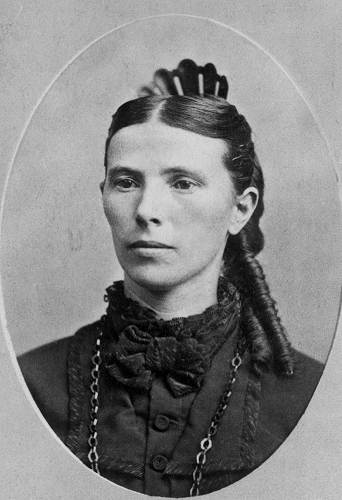
26 Augusta Fogelman
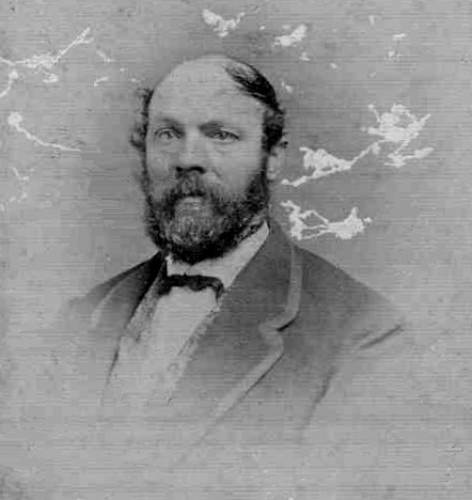
27 William Hauenstein, Sr.
All this background information is described to better understand something about which I had not paid much attention, or perhaps didn’t even know. Ruby told me that Augusta Hauenstein, her grandmother, had been married before her marriage to John Fogleman to a man named Theron Folsom.
As it turns out, Theron had been a very important figure in Miller County history in the early post Civil War days and would have become one of the county’s better know historical figures were not for his untimely death at a relatively early age. In addition, a review of his Folsom family history reveals some interesting relationships to other well known Miller County people.
Theron was born in New York state in 1842. According to Ruby, he was related to President Grover Cleveland’s wife, Frances Folsom.
When a young man Theron enlisted in the Army of the Potomac in New York where he spent three years as a private taking part in the Battles of the Wilderness. He lived patiently on his rations, and sent home his wages to his father, William, who had a legal claim to them.
At the close of the war his father placed in his hands about one thousand dollars saved from Theron’s earnings after which Theron came to Tuscumbia. In Tuscumbia, Theron engaged in a general merchandise trade with William Haunstein II on the bank of the Osage River where soon the partners established an extensive and profitable business. The store/trading post dealt in purchasing and selling wheat, wool, feathers, lead ore, tiff, and railroad ties as well as other items (photo 31).
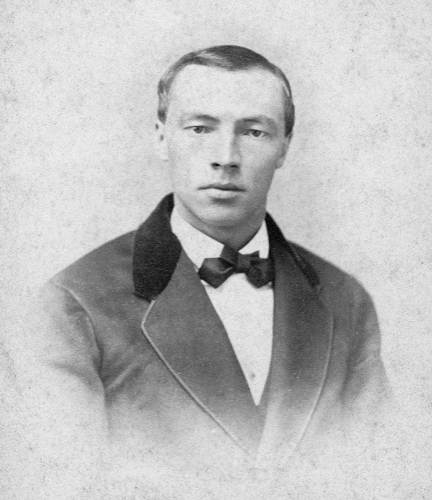
31 William H. Hauenstein
Later, this business was taken over by William’s cousin, George Hauenstein, and the store became known for many years thereafter as Hauenstein’s store (photo 32).
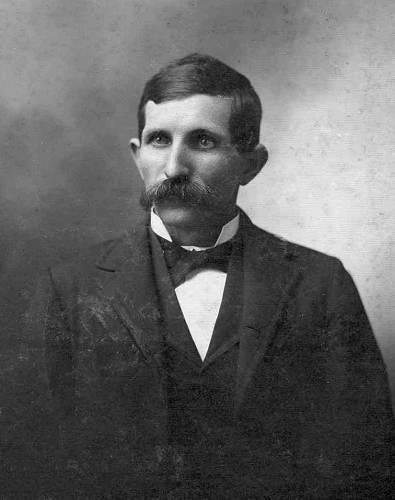
32 George Hauenstein
In 1869, Theron married Augusta Hauenstein, sister to William Hauenstein II. In 1875, Theron was elected as a state representative from Miller County to the Missouri State Legislature where he spent 2 years. In 1878, he entered the political scene again and ran for the office of Clerk of the County Court. Just a few days before the election, Theron died at the age of 35 years from “over-work” on his campaign. According to witnesses, while making his canvass he was stricken with “paralysis.” He was “mourned by a large circle of friends.”
Researching Theron’s family history I discovered that his father, William Folsom, had moved to Miller County at some point in his life. Ancestry.Com indicates that William was born in 1815 in Vermont but died in Miller County, Missouri in 1880. Also, land records indicate that William at some point in time had purchased eighty acres of land six miles north of Tuscumbia near what is now Highway 52. In addition, I found that James Skinner had purchased this eighty acres adding it to other land purchases in the area and it is on this farm today one can see James Skinner’s concrete enclosed tomb on the roadside of Highway 52 (photos 33 and 34).

33 James Skinner
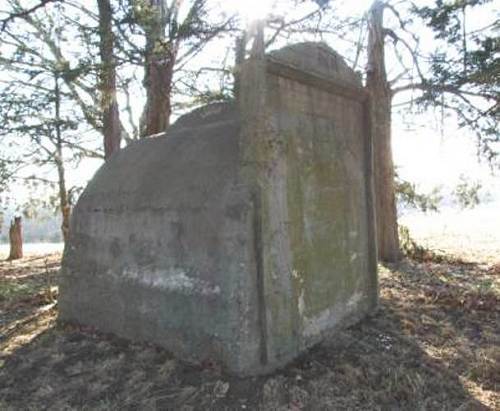
34 Skinner Tomb
Further investigation reveals that James Skinner married Lucy Folsom, daughter of William Folsom and sister to Theron Folsom.
James Skinner’s granddaughter, Louie Clark Lawson, has written a short summary of James and Lucy Folsom Skinner’s journey from back east to Miller County:
My Grandfather James Skinner
(written approximately in 1960)
Louie Clarke Lawson (photo 35)
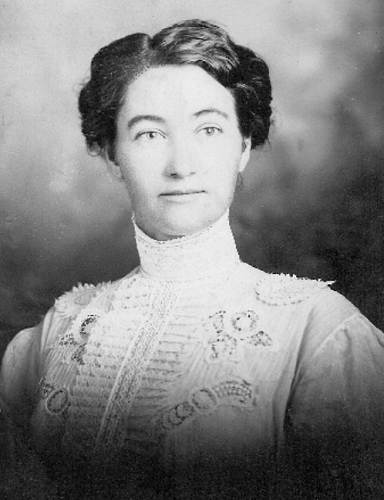
35 Louie Clarke Lawson
“My grandfather James Skinner, was born in London, England. When he was 7 years old he, his brother, Tom and mother and father set sail for the United States to seek a new home. While crossing, his father died, and when they arrived in New York, his mother found herself with two small children, no money and no way of supporting herself. So she bound my grandfather out to some rich folks where he was a servant until he was 21. He met my grandmother, Lucy Miriam Folsom in Schenectady, N. Y. Lucy was a cousin of Mrs. Grover Cleveland who was also a Folsom. When he was 24 and she 14 they went to Palmyra, Wisconsin and were married. Soon after, they came to Missouri, settling in Sedalia just before the War. He was a carpenter by trade and built one of the first houses in Sedalia. In addition, my mother, Isabelle Skinner, I've been told was the first white child born there. Two other children were born there but died.
He went into the mercantile business there, but was burned out during the war. He was in the Army, and after the war he moved to Knob Noster where he went into the saloon business for several years. His next move was to what is known as the "old Skinner farm" in Miller County. No one knows how he located it, as there was no way of communicating in those days, unless he saw it during one of his marches.”
You can read more about Jim Skinner and his tomb by the road on Highway 52 at this location on our website.
So, up until Ruby Fogleman Webb gave me the photo of Theron Folsom, first husband of her grandmother, Augusta Hauenstein Fogleman, I would never have know much about him nor his familial connection to another well known Miller Countian, Louie Clarke Lawson, granddaughter of James Skinner and Lucy Folsom Skinner, who was a sister to Theron Folsom, who was Louie’s great uncle.
We could not function at the museum were it not for all our volunteers. For example, just getting our quarterly newsletter out on time requires much cooperation among our staff. First, Nancy Thompson, museum director accumulates the photos and articles from different sources and then she has to put them together in an attractive format prior to printing the pages. Afterward, our volunteer staff gathers to place each letter in an envelope, apply addresses, and then apply stamps as a third step in the process. Finally, another volunteer takes the enveloped letters to the post office. Here is a photo of our group which sent out the most recent newsletter (photo 36).
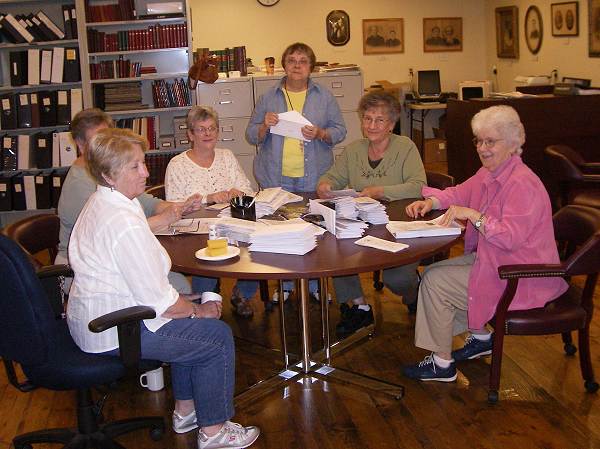
36 Mailing Quarterly Newsletter
From left to right are Betty Kallenbach, who is partially hidden by Jody Newman, Karen Smith, museum director Nancy Thompson, Joy Flaugher, and Catherine Ponder. Diane Berkbigler also was present but not at the time of the taking of the photo.
For those who haven’t seen it, here is our most recent newsletter (photo 37).
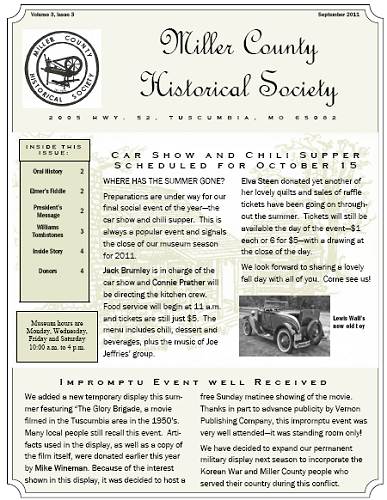
37 September 2011 Newsletter
Click image to read entire Newsletter in PDF format
Another volunteer not pictured in the above photo is Joy Flaugher’s husband, Harold Flaugher, who is pictured here placing a new larger platform for a new TV system planned for the Lee Mace Ozark Opry display (photo 38).
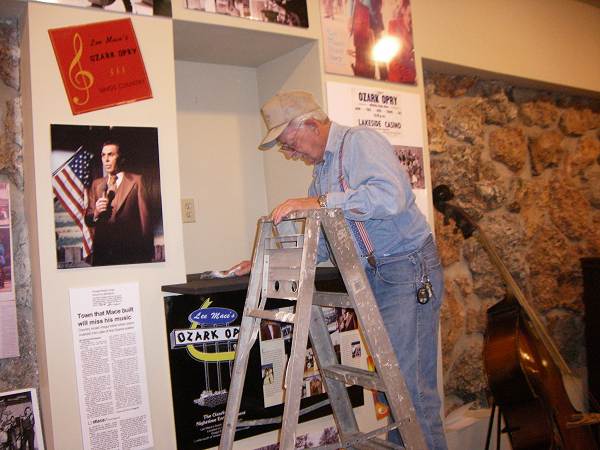
38 Harold Flaugher installing Monitor Platform
Harold also was very proud to hold up for a photo the fiddle which once belonged to his father, Elmer Flaugher, which I had bought from Elmer back in 1962 and recently donated to the museum (photo 39).
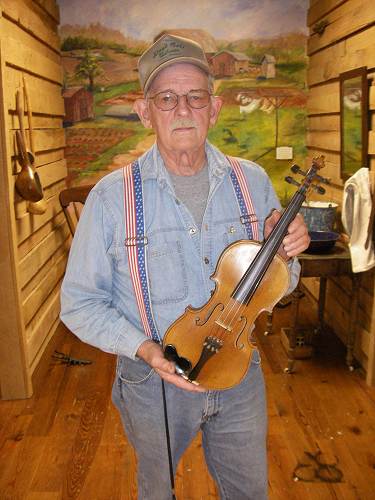
39 Harold Flaugher with father Elmer's Fiddle
Harold not only can play the fiddle but also is skilled at fiddle repair and refinishing.
Recently, we received a very old leather bound book which is a pictorial history of the Civil War donated by Terry Howerton of Lake Ozark, Missouri. The book is titled “The Soldier In Our Civil War,” printed in 1884 by the J.H. Brown Publishing Company of New York. Here is a photo I took of the book (photo 40):
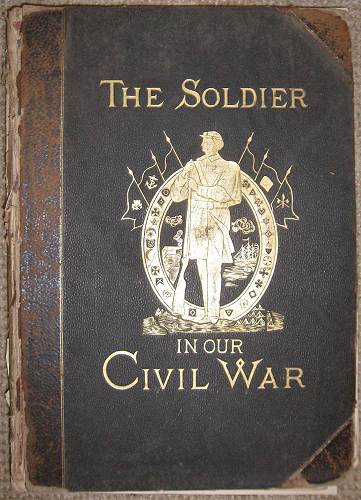
40 The Soldier In Our Civil War
Terry said she was given the book by her grandmother who had it in her possession for many years. Terry does not know which of her ancestors before her grandmother had been the original purchaser. The book is replete with illustrations by numerous artists, most of which are engravings. You can read more about this collector’s item at the following websites:
The Lincoln Collection
Raptis Rare Books
The History List
That’s all for this week.
 Joe Pryor
Previous article links are in a dropdown menu at the top of all of the pages.
|

